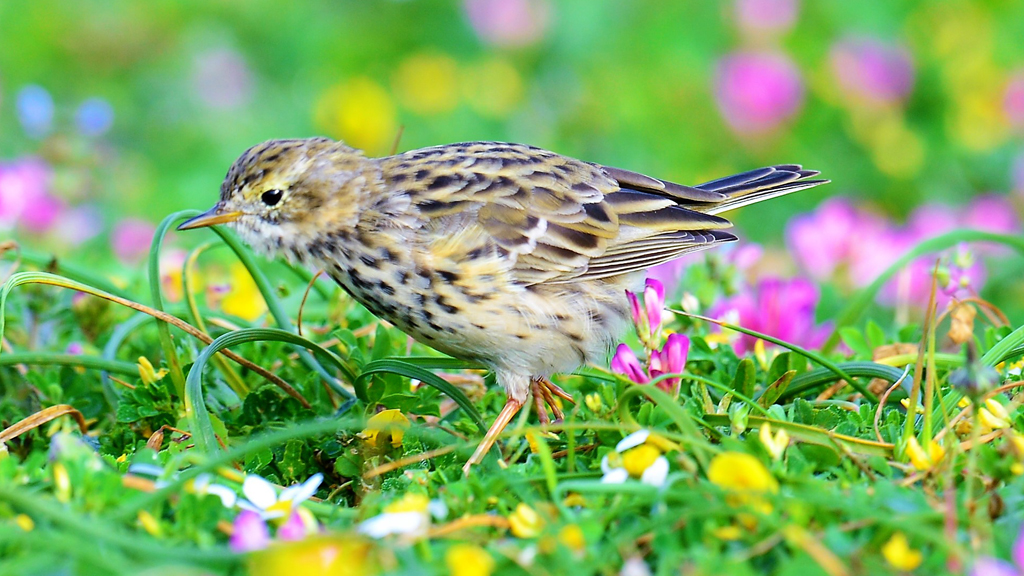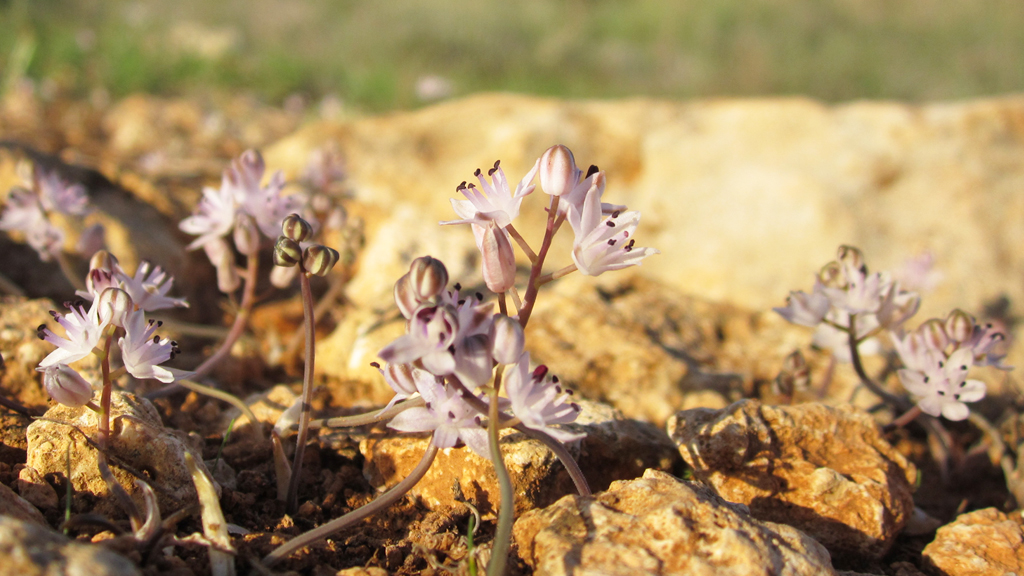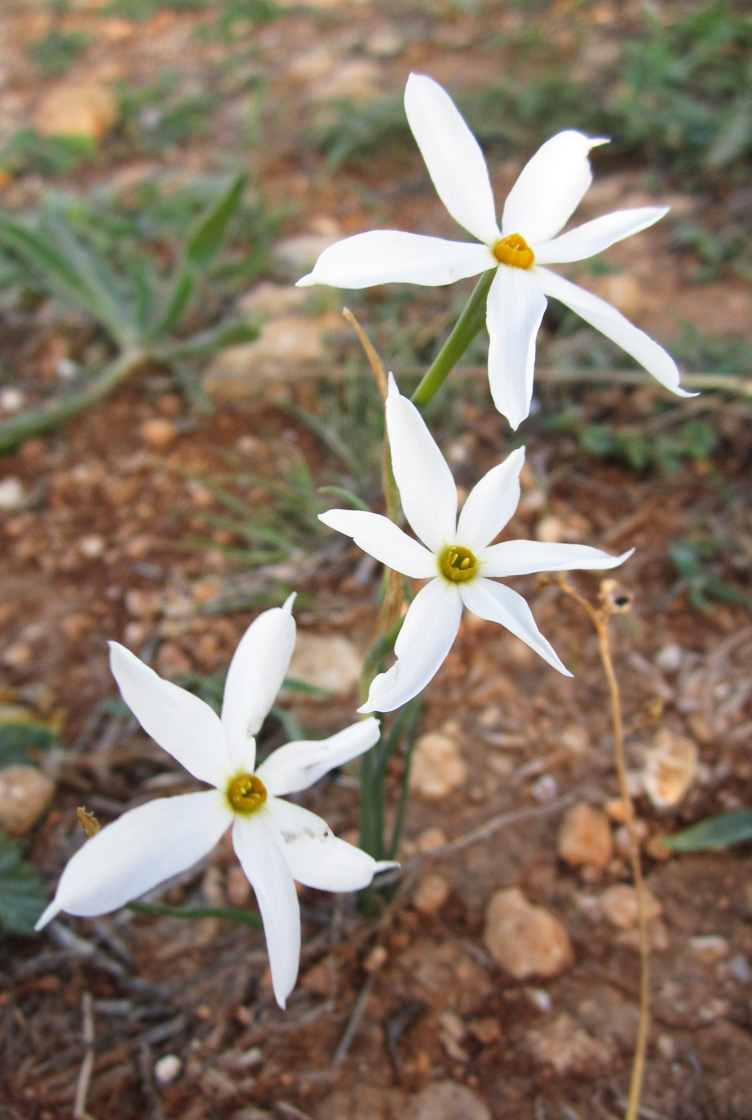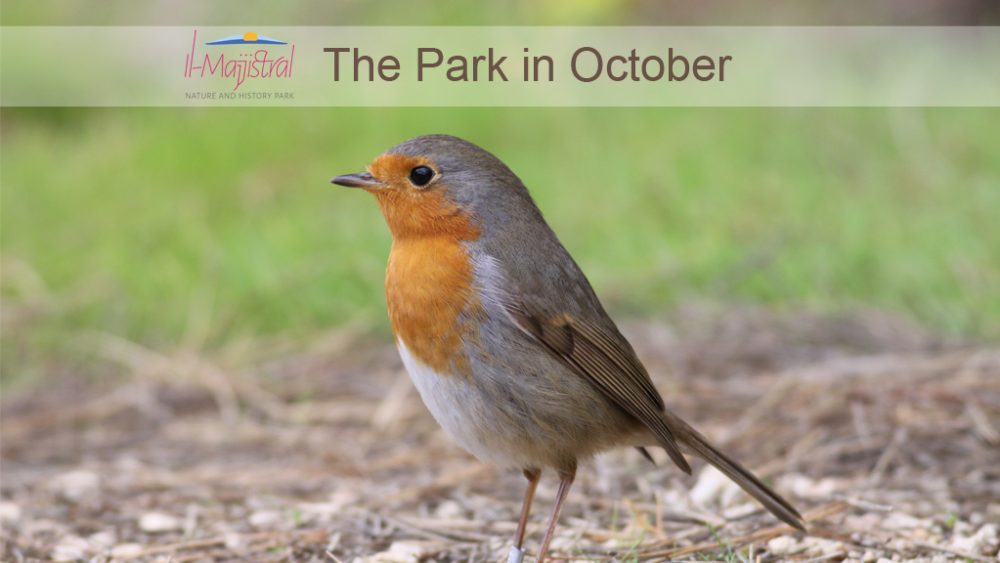October brings with it, usually, rain, and fresher air.
October is also the month were some familiar birds appear in the Park, some of which stay here throughout the winter. Two of these are the Robin (Pitirross) and the Stonechat (Buċaqq tax-Xitwa). The Robin is unmistakable with its reddish breast, and is frequently heard calling or singing, often from a tree or shrub.
The Stonechat likes to perch in the open, on top of a stem or shrub, from where it delivers its “wheet-tsak-tsak” calls. Meadow Pipits (Pespus) also arrive, these often fly in flocks and forage for food on the ground.
 Meadow Pipit (Maltese: Pespus)
Meadow Pipit (Maltese: Pespus)
Butterflies and moths should also be making an appearance in October. Familiar Painted Lady butterflies (Farfett tax-Xewk) can occur in good numbers, while Clouded Yellow butterflies (Farfett taż-Żiju) are regularly recorded in October. Both butterfly species migrate and also breed in the Maltese islands.
Another migrant and breeding butterfly that can be seen in October is the Red Admiral (Farfett tal-Ħurrieq), with its striking red and black colours. Larvae (caterpillars) of the Large White butterfly (Farfett tal-Kaboċċi) can be encountered feeding on the Perennial Wall-Rocket (Ġarġir Isfar) plants that should be in bloom.
The Mediterranean Tiger Moth (Żarżur) is a small brightly-coloured moth that appears in late September and October. The Maltese name comes from its buzzing sound when the moth is flying.

Autumn Squill (Maltese: Ghansar tal-Harifa)
The rains also kick-start the cycle of many plants, and the countryside becomes greener.
Annuals grow from seeds, while those that have underground storage organs start to grow the leaves. A few plants however flower in October, before growing leaves.
The Autumn Narcissus (Narċis Imwaħħar) and Autumn Squill (Għansar tal-Ħarifa) are two such plants. The Autumn Narcissus is a small delicate plant but its flowers are usually noticeable low down above the ground, showing delicate white segments surrounding a yellow or orange centre. On the other hand the Autumn Squills are mainly inconspicuous, even if they are numerous on the ground.
(Għansar tal-Ħarifa) are two such plants. The Autumn Narcissus is a small delicate plant but its flowers are usually noticeable low down above the ground, showing delicate white segments surrounding a yellow or orange centre. On the other hand the Autumn Squills are mainly inconspicuous, even if they are numerous on the ground.
Other species that flower after the rains is the delicate Autumn Grape Hyacinth (Ġjaċint tal-Ħarifa) with small bluish flowers hanging on a thin stem. Its bluish flowers often reveals its presence among other vegetation. The Mediterranean Meadow Saffron (Buswieq tax-Xitwa) is another low plant with flowers ranging in colour from white to pale or darker pinkish/purplish violet. It is common in the Park.
Autumn narcissus
Please note!
When you visit the Park walk along the trails and do not trample. Do not leave litter behind. If you come with your pet dog please keep it on a leash, especially at this time of the year when birds are nesting. Thank you.
Join our Newsletter!
Each month we’ll send you a roundup of our hottest and most popular news about Majjistral Nature and History Park. Just fill out the form with your name and email address.
 *You can unsubscribe at any time.
*You can unsubscribe at any time.
*Photos provided by:
Robin – Pitirross by Nicholas Galea,
Meadow Pipit, Pespus – Natalino Fenech,
Autumn Squill Ghansar tal-Harifa and Autumn narcissus- Annalise Falzon.




Comments are closed.